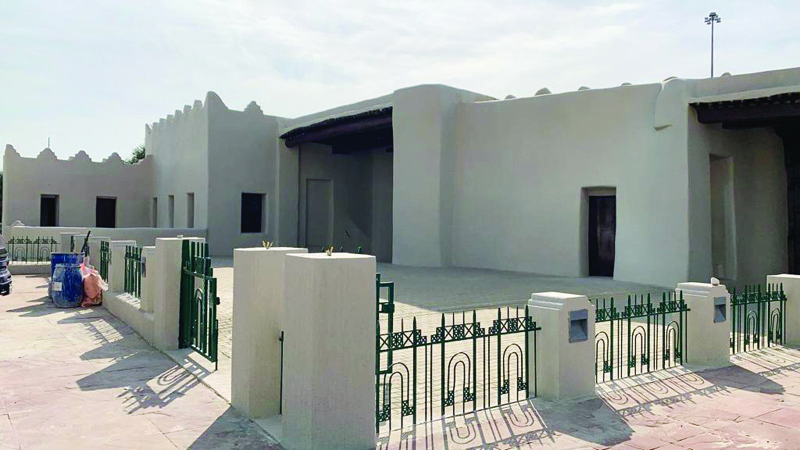KUWAIT: Historical buildings are a national heritage and a living witness to the past, and Kuwait is keen to take care and preserve architecture over the years, said an official on Saturday. Assistant Secretary of the Antiquities and Museums Sector at the National Council for Culture, Arts and Letters (NCCAL) Tahani Al-Adwani said that the NCCAL was playing an active role in preserving historic buildings in the country.
NCCAL documents, studies, and prepares architectural plans as well as structural checks of historical buildings to complete rehabilitation, restoration and maintenance works for each of them, Adwani noted. In addition to monitoring historical buildings and developing a methodology for preserving this national heritage through proposals and finding solutions to the challenges to preserve, maintain and restore architectural heritage.
Adwani revealed that since the beginning of the current year, many historical buildings have been restored such as Sheikh Abdullah Al-Jaber Palace, Investigation Department Building, Al-Khalawi House, Sheikh Ahmad Al-Jaber Rest House and Sheikh Abdullah Al-Salem Palace in Failaka Island, and Al-Jahra Gate.
NCCAL strategy is to create alternative opportunities and paths for partnership with the private sector or other bodies to support the Council's work and strategy, such as the Kuwait Authority for Partnership Projects, the National Cooperative Projects Committee and others, she noted. Adwani said that the council's interest in empowering and preserving historical buildings comes with unlimited support from the Minister of Information and Culture and Minister of State for Youth Affairs Abdul Rahman Al-Mutairi.
Al-Ghanim PalacePreserving history
Engineer Walid Al-Hamidi, the superintendent of historical buildings in the council, said meanwhile that Kuwait is interested in historical buildings and preserving them, referring to the Amiri Decree No 1 of 1960 on the Antiquities Law and the amendments made to it in Law No 9 of 1994. He said that the memorandum restricted the right to restore sites and buildings in the council and regulated special conditions for the rise of modern buildings and archaeological areas and buildings to preserve their own environments.
Hamidi added that one of the most important points is also obtaining approval from the National Council before starting any repair or restoration procedure for registered buildings and determining the percentage and quality of buildings adjacent to any historic building that has been registered. The structural plan for Kuwait when developing designs in relation to historical buildings to ensure that a building campus is created around these buildings and to set conditions for new buildings adjacent to them in line with their existing historical environment, he added.
Hamidi said the maintenance and restoration of the Al-Ghanim Palace is currently being rehabilitated, which comes with a donation from the Al-Ghanim family represented by Fouad and Qutayba Al-Ghanim, in order to ensure that the palace is restored to its historical authenticity. The Minister of Information Mutairi confirmed in a previous statement that legal action will be taken against any person who enters a historical building or archaeological site surrounded by a security fence without a license.
This comes according to the Antiquities Law, in which the punishment for transgressions reaches five years in prison and legal measures will be taken not to allow entry to any historical building or archaeological site without official written approval from the General Secretariat of the National Council for Culture and Arts. - KUNA
An old building under maintenance.




